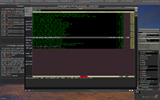Hvernig á að setja upp Tiny Tiny RSS Reader á FreeBSD 11 FAMP VPS
Að nota annað kerfi? Tiny Tiny RSS Reader er ókeypis og opinn uppspretta sjálf-hýstinn fréttastraumur (RSS/Atom) lesandi og safnari, hannaður til að dreifa
This tutorial demonstrates a full-featured email server running on OpenBSD using OpenSMTPD, Dovecot, Rspamd, and RainLoop. OpenSMTPD is the default mail server for OpenBSD. Choose a Vultr Compute Cloud instance with plenty of storage for the expected number of users.
Set up your user account to perform tasks as root.
su -
usermod -G wheel <username>
echo "permit nopass keepenv :wheel" > /etc/doas.conf
exit
Set up the package repository for OpenBSD.
doas su
echo "https://cdn.openbsd.org/pub/OpenBSD" > /etc/installurl
exit
Add the required packages.
doas pkg_add opensmtpd-extras opensmtpd-filter-rspamd dovecot dovecot-pigeonhole rspamd redis
By default, OpenSMTPD only listens on localhost. It must be explicitly configured to listen on external interfaces. It should be configured to use virtual users instead of system users for security.
Backup the default /etc/smtpd.conf file and create a new one from scratch.
cd /etc/mail
mv smtpd.conf smtpd.conf.default
Create a new smtpd.conf as shown below. Replace example.com with your domain. This initial configuration does not activate the rspamd filter while testing OpenSMTP. The spam filter will be activated later.
pki "mail" cert "/etc/ssl/mail.crt"
pki "mail" key "/etc/ssl/private/mail.key"
table aliases file:/etc/mail/aliases
table credentials passwd:/etc/mail/credentials
table virtuals file:/etc/mail/virtuals
filter "rspamd" proc-exec "/usr/local/libexec/smtpd/filter-rspamd"
# To accept external mail, replace with: listen on all
# listen on all tls pki "mail" hostname "mail.example.com"
listen on egress port submission tls-require pki "mail" hostname "mail.example.com" \
auth <credentials>
action "local_mail" mbox alias <aliases>
action "domain_mail" maildir "/var/vmail/example.com/%{dest.user}" \
virtual <virtuals>
action "outbound" relay
# Uncomment the following to accept external mail for domain "example.org"
# match from any for domain "example.com" action "domain_mail"
match from local for local action "local_mail"
match from local for any action "outbound"
match auth from any for any action "outbound"
OpenSMTPD and Dovecot can share an authentication database. This database resembles the system password file in format, with two extra fields for Dovecot. The two special fields define the virtual home directory and the mail location. Passwords are in blowfish format. This tutorial creates three example users.
Generate the passwords and concatenate them to the /etc/mail/credentials file.
doas su
smtpctl encrypt example_password1 >> /etc/mail/credentials
smtpctl encrypt example_password2 >> /etc/mail/credentials
smtpctl encrypt example_password3 >> /etc/mail/credentials
exit
The output looks similar to this:
$2b$10$agmNBPvFm1zqCjbbZC3JbO4Ns2jJNZQfTS45MAnKi.IPrkKITyTa6
$2b$10$LwkcKVVnwG8hDxu2W4YKD.K0kQ2oylOmQ9SBUb0hIopBsmNxYPb4e
$2b$10$bgLW/GMZyRXKbROgRQIvRu4xbeOqOJJXlgEAKuS5sIrBvfdPvEzeq
Edit /etc/mail/credentials to add the required fields. Each line maps to a system account, vmail, with UID and GID of 2000. Replace example.com with your domain. The virtual user name is the complete email address.
[email protected]:$2b$10$agmNBPvFm1zqCjbbZC3JbO4Ns2jJNZQfTS45MAnKi.IPrkKITyTa6:vmail:2000:2000:/var/vmail/example.com/john::userdb_mail=maildir:/var/vmail/example.com/john
[email protected]:$2b$10$LwkcKVVnwG8hDxu2W4YKD.K0kQ2oylOmQ9SBUb0hIopBsmNxYPb4e:vmail:2000:2000:/var/vmail/example.com/adam::userdb_mail=maildir:/var/vmail/example.com/adam
[email protected]:$2b$10$bgLW/GMZyRXKbROgRQIvRu4xbeOqOJJXlgEAKuS5sIrBvfdPvEzeq:vmail:2000:2000:/var/vmail/example.com/natalie::userdb_mail=maildir:/var/vmail/example.com/natalie
/etc/mail/credentials permissions to read-only for _smtpd and _dovecot system users.Create the vmail system user, group, and home directory.
When you create the vmail system user, you will receive the following warning: useradd: Warning: home directory '/var/vmail' doesn't exist, and -m was not specified. This is expected. This avoids cluttering the directory with dot files from /etc/skel. They are not required because the vmail account does not allow login.
doas chmod 0440 /etc/mail/credentials doas chown smtpd:dovecot /etc/mail/credentials doas useradd -c "Virtual Mail Account" -d /var/vmail -s /sbin nologin -u 2000 -g =uid -L staff vmail doas mkdir /var/vmail doas chown vmail:vmail /var/vmail
Create /etc/mail/virtuals to define the valid email addresses.
/var/vmail/example.com/<user>.Mail delivery attempted for addresses not defined in this file will be bounced with a Delivery Status Notification.
[email protected]: [email protected] [email protected]: [email protected] [email protected]: [email protected] [email protected]: [email protected] [email protected]: vmail [email protected]: vmail [email protected]: vmail
This example uses a self-signed certificate. Use a valid signed certificate if you have one. When prompted for the common name, be sure it matches the FQDN of the server. This example uses mail.example.com.
doas su
cd /etc/ssl
openssl genrsa -out private/mail.key 4096
openssl req -x509 -new -nodes -key private/mail.key -out mail.crt -days 3650 -sha256
chmod 0400 /etc/ssl/private/mail.key
exit
Use the OpenSMTPD configuration syntax checker. If no problems are found, restart the smtpd daemon.
doas smtpd -n
doas rcctl restart smtpd
From an outside mail account, send a test email to one of the users.
/var/vmail and deliver the mail to /var/vmail/example.com/<username>/new.1576339842.4d64757b.example.com:2,.Review the contents of the file, including all of the mail headers, to verify the email delivery works properly.
Return-Path: <n0244e80da3-54b1ed125c5342fc-adam===example.org@bounce.example.org>
Delivered-To: [email protected]
Received: from spruce-goose-ba.twitter.com (spruce-goose-ba.twitter.com [199.59.150.96])
by mail.example.com (OpenSMTPD) with ESMTPS id 75b514d3 (TLSv1.2:ECDHE-RSA-AES256-GCM- SHA384:256:NO)
for <[email protected]>;
Sat, 14 Dec 2019 11:10:40 -0500 (EST)
DKIM-Signature: v=1; a=rsa-sha256; c=relaxed/relaxed; d=twitter.com;
s=dkim-201406; t=1576339839;
bh=jhKB5/w9v87GaXSuizT576ntJ/72gvLRDhsqmGQQrCE=;
h=Date:From:To:Subject:MIME-Version:Content-Type:List-Unsubscribe:
Message-ID;
b=TWn/QVUJ1VDlWiweWoanwHLABCL1nqmm0+TBzh3PjmYNm0quRMXB7QL2ykzHGME5A
DTz/JFHa0cOvQsrdhxxbjOLFKimK0nF+Ou5kI+2HzTzfVNZS0qGnTVP/tZyaIsWjjl
an5EiR6HFOHG4iClOOEOJW4oLDEZfPTefrlW+378bmHGIRUNDvVKrbXKunL9fJFAb3
JSrhWQNwbrF/aARFzw4nKfb1I7vTRSrN1eXE5JxzGwI2XAjqDIWdR5ExwUNbJH5ZPs
wQ85j8KLZEEgQkbH9CypgeUMJWsVK95FqOCCaqKMS10M7intGMb3aeiiFcB7yDHi9t
u7rVESm4eGp/g==
X-MSFBL: DM7pSZns+YDRgNEmGNre9aPjZTtc1tDlN97w5rQDBts=|eyJ1IjoibWF0dEBnb2J
sYWNrY2F0LmNvbUBpaWQjIzU0YjFlZDEyNWM1MzQyZmNiNThiMzVmNzI0NDZlMGF
mQHVzYiMjNkAyNDRAMTA4MjgwNTAxMDYzNzk1MDk3NkAwQDA4MjY5ZWI4OTI3YzR
kNTFiNTZkMjY3YzY2OGRmN2IwY2Y4M2ExZGIiLCJyIjoibWF0dEBnb2JsYWNrY2F
0LmNvbSIsImciOiJCdWxrIiwiYiI6InNtZjEtYmd4LTM0LXNyMS1CdWxrLjE4NiJ
9
Date: Sat, 14 Dec 2019 16:10:39 +0000
...
Dovecot requires the ability to have a larger number of files open for reading and writing than the default class allows. Failing to do this will cause errors that are difficult to troubleshoot.
Define a login class for the Dovecot daemon. At the bottom of /etc/login.conf add the following lines.
dovecot:\
:openfiles-cur=1024:\
:openfiles-max=2048:\
:tc=daemon:
Create /etc/dovecot/local.conf.
auth_mechanisms = plain
first_valid_uid = 2000
first_valid_gid = 2000
mail_location = maildir:/var/vmail/%d/%n
mail_plugin_dir = /usr/local/lib/dovecot
managesieve_notify_capability = mailto
managesieve_sieve_capability = fileinto reject envelope encoded-character vacation subaddress comparator-i;ascii-numeric relational regex imap4flags copy include variables body enotify environment mailbox date index ihave duplicate mime foreverypart extracttext imapsieve vnd.dovecot.imapsieve
mbox_write_locks = fcntl
mmap_disable = yes
namespace inbox {
inbox = yes
location =
mailbox Archive {
auto = subscribe
special_use = \Archive
}
mailbox Drafts {
auto = subscribe
special_use = \Drafts
}
mailbox Junk {
auto = subscribe
special_use = \Junk
}
mailbox Sent {
auto = subscribe
special_use = \Sent
}
mailbox Trash {
auto = subscribe
special_use = \Trash
}
prefix =
}
passdb {
args = scheme=CRYPT username_format=%u /etc/mail/credentials
driver = passwd-file
name =
}
plugin {
imapsieve_mailbox1_before = file:/usr/local/lib/dovecot/sieve/report-spam.sieve
imapsieve_mailbox1_causes = COPY
imapsieve_mailbox1_name = Junk
imapsieve_mailbox2_before = file:/usr/local/lib/dovecot/sieve/report-ham.sieve
imapsieve_mailbox2_causes = COPY
imapsieve_mailbox2_from = Junk
imapsieve_mailbox2_name = *
sieve = file:~/sieve;active=~/.dovecot.sieve
sieve_global_extensions = +vnd.dovecot.pipe +vnd.dovecot.environment
sieve_pipe_bin_dir = /usr/local/lib/dovecot/sieve
sieve_plugins = sieve_imapsieve sieve_extprograms
}
protocols = imap sieve
service imap-login {
inet_listener imaps {
port = 0
}
}
service managesieve-login {
inet_listener sieve {
port = 4190
}
inet_listener sieve_deprecated {
port = 2000
}
}
ssl_cert = </etc/ssl/mail.crt
ssl_key = </etc/ssl/private/mail.key
userdb {
args = username_format=%u /etc/mail/credentials
driver = passwd-file
name =
}
protocol imap {
mail_plugins = " imap_sieve"
}
There is a bug in Dovecot where the ssl_cert and ssl_key settings do not get overridden in the local.conf file so we have to comment them out. If you miss this step, Dovecot will fail to start correctly.
Edit /etc/dovecot/conf.d/10-ssl.conf as shown.
...
# PEM encoded X.509 SSL/TLS certificate and private key. They're opened before
# dropping root privileges, so keep the key file unreadable by anyone but
# root. Included doc/mkcert.sh can be used to easily generate self-signed
# certificate, just make sure to update the domains in dovecot-openssl.cnf
#ssl_cert = </etc/ssl/dovecotcert.pem
#ssl_key = </etc/ssl/private/dovecot.pem
...
Sieve scripts train Rspamd on spam and ham. Moving email into and out of the junk folder triggers an event to train Rspamd.
These files are located at /usr/local/lib/dovecot/sieve.
Create the report-ham.sieve file.
require ["vnd.dovecot.pipe", "copy", "imapsieve", "environment", "variables"];
if environment :matches "imap.mailbox" "*" {
set "mailbox" "${1}";
}
if string "${mailbox}" "Trash" {
stop;
}
if environment :matches "imap.user" "*" {
set "username" "${1}";
}
pipe :copy "sa-learn-ham.sh" [ "${username}" ];
Create the report-spam.sieve file.
require ["vnd.dovecot.pipe", "copy", "imapsieve", "environment", "variables"];
if environment :matches "imap.user" "*" {
set "username" "${1}";
}
pipe :copy "sa-learn-spam.sh" [ "${username}" ];
Compile the files.
sievec report-ham.sieve
sievec report-spam.sieve
Create the following two shell scripts in /usr/local/lib/dovecot/sieve
Add the following to sa-learn-ham.sh
#!/bin/sh
exec /usr/local/bin/rspamc -d "${1}" learn_ham
Add the following to sa-learn-spam.sh
#!/bin/sh
exec /usr/local/bin/rspamc -d "${1}" learn_spam
Make the files executable.
chmod 0755 sa-learn-ham.sh
chmod 0755 sa-learn-spam.sh
Enable and start Dovecot.
rcctl enable dovecot
rcctl start dovecot
Check that Dovecot started properly.
ps ax | grep dovecot
88005 ?? I 0:00.11 /usr/local/sbin/dovecot
69640 ?? I 0:00.03 dovecot/anvil
91207 ?? I 0:00.03 dovecot/log
98178 ?? I 0:00.19 dovecot/config
34712 ?? I 0:00.06 dovecot/stats
96674 ?? I 0:00.03 dovecot/imap-login
8891 ?? S 0:00.02 dovecot/imap
Verify Dovecot can correctly read /etc/mail/credentials
doveadm user [email protected]
field value
uid 2000
gid 2000
home /var/vmail/example.com/john
mail maildir:/var/vmail/example.com/john
Verify a mail user can log in.
doveadm auth login [email protected]
Password: ********
passdb: [email protected] auth succeeded
extra fields:
[email protected]
userdb extra fields:
[email protected]
mail=maildir:/var/vmail/example.com/john
uid=2000
gid=2000
home=/var/vmail/example.com/john
auth_mech=PLAIN
This is a basic Rspamd configuration, refer to the offical documentation for more details. This example creates a definition for our domain to enable DKIM signing.
Create a public/private keypair in /etc/mail/dkim and set the correct permissions.
doas su
mkdir /etc/mail/dkim
cd /etc/mail/dkim
openssl genrsa -out private.key 1024
openssl rsa -in private.key -pubout -out public.key
chmod 0440 private.key
chown root:_rspamd private.key
Create a DNS record for DKIM containing the public key. Refer to your DNS provider for details of how to create a DKIM record. Copy the contents from /etc/mail/dkim/public.key and paste it after the p= part of the DKIM record as shown below. Note this example also creates an SPF record.
default._domainkey.example.com. IN TXT "v=DKIM1;k=rsa;p=MIGfMA0GCSqGSIb3DQEBAQUAA4GNADCBiQKBgQClcuK3FV3Ug64li8iFsuJ2ykgb7FMZsujk9uG79ppPUp57vCfjzO7F+HBfx5qIwvlGxv2IJXK86FZwhpUX+HFCDUtfB2z0ZNGerWcZfNzM1w1Bru/fdMd2tCYkiHEa5RWIkLfs/Fm+neXxRZfAG2UDWmAghNbgzYv7xViwgufDIQIDAQAB"
example.com. IN TXT "v=spf1 a ip4:192.0.2.1 mx ~all"
Create a DMARC record.
_dmarc.example.com. IN TXT "v=DMARC1;p=none;pct=100;rua=mailto:[email protected]"
Create the /etc/rspamd/local.d/dkim_signing.conf configuration file.
The selector="default"; line is derived from the first part of the DKIM DNS record (default._domainkey....) created above.
domain {
example.com {
path = "/etc/mail/dkim/example.com.key";
selector = "default";
}
}
Enable and start Rspamd.
doas rcctl enable redis rspamd
doas rcctl start redis rspamd
Change the lines below in /etc/mail/smtpd.conf and restart OpenSMTPD to enable Rspamd.
...
listen on all tls pki "mail" hostname "mail.example.com" filter "rspamd"
listen on egress port submission tls-require pki "mail" hostname "mail.example.com" \
auth <credentials> filter "rspamd"
...
rcctl restart smtpd
Test the mail server with POP3 or IMAP email client. If you do not require webmail, stop here.
When prompted, please choose the most current version of PHP.
pkg_add php php-curl php-pdo_sqlite php-zip pecl73-mcrypt zip unzip wget curl
Fetch the RainLoop webmail tarball and extract it to /var/www/htdocs/.
Use the Standard Edition which includes an automatic updater.
cd /tmp
wget https://www.rainloop.net/repository/webmail/rainloop-latest.zip
unzip rainloop-latest.zip -d /var/www/htdocs/rainloop
chown -R www:www /var/www/htdocs
/etc/examples/acme-client.conf to /etcAdd the following lines at the bottom of the file:
domain webmail.example.com {
domain key "/etc/ssl/private/webmail.example.com.key"
domain full chain certificate "/etc/ssl/webmail.example.com.crt"
sign with letsencrypt
}
webmail.example.comEdit /etc/httpd.conf following the example below.
prefork 3
types { include "/usr/share/misc/mime.types" }
server "default" {
listen on egress port 80
root "/htdocs"
directory index index.html
location "/.well-known/acme-challenge/*" {
root "/acme"
request strip 2
}
}
Run the httpd syntax check.
httpd -n
Enable and start httpd.
rcctl enable httpd
rcctl start httpd
Request the Let's Encrypt certificate.
acme-client -v webmail.example.com
Add the server definitions for RainLoop to /etc/httpd.conf
server "webmail.example.com" {
listen on egress port 80
block return 302 "https://$SERVER_NAME$REQUEST_URI"
}
server "webmail.example.com" {
listen on egress tls port 443
root "/htdocs/rainloop"
directory index "index.php"
tcp { nodelay, backlog 10 }
tls {
certificate "/etc/ssl/webmail.example.com.crt"
key "/etc/ssl/private/webmail.example.com.key"
}
hsts {
max-age 31556952
preload
}
# Value below is 25MB in bytes. 1MB = 1048576 bytes
connection max request body 26214400
location "/data*" {
block return 403
}
location "*.php*" {
fastcgi socket "/run/php-fpm.sock"
}
}
Configure PHP to allow attachments up to 25 megabytes. Make the following changes in /etc/php-7.3.ini:
; Maximum allowed size for uploaded files.
; http://php.net/upload-max-filesize
upload_max_filesize = 25M
...
; Maximum size of POST data that PHP will accept.
; Its value may be 0 to disable the limit. It is ignored if POST data reading
; is disabled through enable_post_data_reading.
; http://php.net/post-max-size
post_max_size = 29M
Enable the necessary PHP modules by copying their configuration files to /etc/php-7.3/
cp /etc/php-7.3.sample/* /etc/php-7.3/.
Check the syntax of /etc/httpd.conf
httpd -n
Enable and start httpd and php-fpm.
rcctl reload httpd
rcctl enable php73_fpm
rcctl start php73_fpm
Browse to https://webmail.example.com/?admin.
The default username is: admin
The default password is: 12345.
Browse to each of the configuration sections and make your desired changes. Once you have finished with the configuration, log into webmail at https://webmail.example.com
Að nota annað kerfi? Tiny Tiny RSS Reader er ókeypis og opinn uppspretta sjálf-hýstinn fréttastraumur (RSS/Atom) lesandi og safnari, hannaður til að dreifa
Að nota annað kerfi? Wiki.js er ókeypis og opinn uppspretta, nútímalegt wikiforrit byggt á Node.js, MongoDB, Git og Markdown. Wiki.js frumkóði er publicl
Að nota annað kerfi? Pagekit 1.0 CMS er fallegt, mát, útvíkkanlegt og létt, ókeypis og opið efnisstjórnunarkerfi (CMS) með
Að nota annað kerfi? MODX Revolution er hraðvirkt, sveigjanlegt, stigstærð, opinn uppspretta, vefumsjónarkerfi (CMS) í fyrirtækisgráðu skrifað í PHP. Það i
Þessi grein leiðir þig í gegnum uppsetningu OpenBSD 5.5 (64-bita) á KVM með Vultr VPS. Skref 1. Skráðu þig inn á Vultr stjórnborðið. Skref 2. Smelltu á DEPLOY
Að nota annað kerfi? osTicket er opinn uppspretta miðasölukerfi fyrir þjónustuver. osTicket frumkóði er hýst opinberlega á Github. Í þessari kennslu
Að nota annað kerfi? Flarum er ókeypis og opinn uppspretta næstu kynslóðar spjallforrit sem gerir umræður á netinu skemmtilegar. Flarum frumkóði er hýst o
Að nota annað kerfi? TLS 1.3 er útgáfa af Transport Layer Security (TLS) samskiptareglunum sem var gefin út árið 2018 sem fyrirhugaður staðall í RFC 8446
Inngangur WordPress er ríkjandi vefumsjónarkerfi á netinu. Það knýr allt frá bloggum til flókinna vefsíðna með kraftmiklu efni
Using a Different System? Subrion 4.1 CMS is a powerful and flexible open source Content Management System (CMS) that brings an intuitive and clear conten
Þessi kennsla mun sýna þér hvernig á að stilla DNS þjónustu sem er auðvelt að viðhalda, auðvelt að stilla og sem er almennt öruggara en klassískt BIN
FEMP stafla, sem er sambærilegur við LEMP stafla á Linux, er safn af opnum hugbúnaði sem er venjulega settur upp saman til að virkja FreeBS
MongoDB er heimsklassa NoSQL gagnagrunnur sem er oft notaður í nýrri vefforritum. Það býður upp á afkastamikil fyrirspurnir, klippingu og afritun
Að nota annað kerfi? Monica er opinn uppspretta persónuleg tengslastjórnunarkerfi. Hugsaðu um það sem CRM (vinsælt tól notað af söluteymum í þ
Inngangur Þessi kennsla sýnir OpenBSD sem rafræn viðskipti með PrestaShop og Apache. Apache er krafist vegna þess að PrestaShop er með flókna UR
Að nota annað kerfi? Fork er opinn uppspretta CMS skrifað í PHP. Forks frumkóði er hýstur á GitHub. Þessi handbók mun sýna þér hvernig á að setja upp Fork CM
Using a Different System? Directus 6.4 CMS is a powerful and flexible, free and open source Headless Content Management System (CMS) that provides developer
VPS netþjónar eru oft skotmörk boðflenna. Algeng tegund árása birtist í kerfisskrám sem hundruð óheimilra ssh innskráningartilrauna. Setja upp
Inngangur OpenBSD 5.6 kynnti nýjan púka sem heitir httpd, sem styður CGI (í gegnum FastCGI) og TLS. Engin frekari vinna þarf til að setja upp nýja http
Þessi kennsla mun sýna þér hvernig á að setja upp hópbúnaðinn iRedMail á nýrri uppsetningu á FreeBSD 10. Þú ættir að nota netþjón með að minnsta kosti einu gígabæta o
Gervigreind er ekki í framtíðinni, hún er hér í nútímanum Í þessu bloggi Lestu hvernig gervigreindarforrit hafa haft áhrif á ýmsa geira.
Ertu líka fórnarlamb DDOS árása og ruglaður með forvarnaraðferðirnar? Lestu þessa grein til að leysa spurningar þínar.
Þú gætir hafa heyrt að tölvuþrjótar græða mikið af peningum, en hefur þú einhvern tíma velt því fyrir þér hvernig þeir vinna sér inn svona peninga? við skulum ræða.
Viltu sjá byltingarkenndar uppfinningar frá Google og hvernig þessar uppfinningar breyttu lífi hvers manns í dag? Lestu síðan til að blogga til að sjá uppfinningar frá Google.
Hugmyndin um að sjálfkeyrandi bílar fari á göturnar með hjálp gervigreindar er draumur sem við höfum átt um tíma núna. En þrátt fyrir nokkur loforð eru þau hvergi sjáanleg. Lestu þetta blogg til að læra meira…
Þar sem vísindin þróast hratt og taka yfir mikið af viðleitni okkar, eykst hættan á því að verða fyrir óútskýranlegri einstæðu. Lestu, hvað sérkenni gæti þýtt fyrir okkur.
Geymsluaðferðir gagna hafa verið að þróast gæti verið frá fæðingu gagna. Þetta blogg fjallar um þróun gagnageymslu á grundvelli upplýsingamynda.
Lestu bloggið til að þekkja mismunandi lög í Big Data Architecture og virkni þeirra á einfaldasta hátt.
Í þessum stafræna heimi hafa snjallheimilistæki orðið afgerandi hluti af lífi. Hér eru nokkrir ótrúlegir kostir snjallheimatækja um hvernig þau gera líf okkar þess virði að lifa því og einfaldara.
Nýlega gaf Apple út macOS Catalina 10.15.4 viðbótaruppfærslu til að laga vandamál en svo virðist sem uppfærslan sé að valda fleiri vandamálum sem leiða til múrsteins á Mac vélum. Lestu þessa grein til að læra meira








